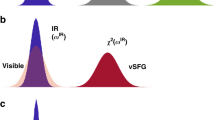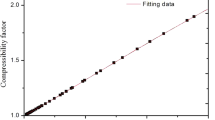Abstract
WE have recently1,2 adapted the sodium-line reversal method of measuring temperature to make time-resolved studies behind shock waves, and have shown that in some cases departures from the calculated equilibrium temperature can be interpreted in terms of vibrational or dissociative relaxation processes. The sodium excitation temperature follows the effective vibrational temperature of the molecules, so that, if there is a lag in the partition of vibrational energy, the measured temperature is initially too low; and, if the vibration lag is short but there is a delay in attainment of dissociative equilibrium, the initial observed temperature is too high.
This is a preview of subscription content, access via your institution
Access options
Subscribe to this journal
Receive 51 print issues and online access
$199.00 per year
only $3.90 per issue
Buy this article
- Purchase on Springer Link
- Instant access to full article PDF
Prices may be subject to local taxes which are calculated during checkout
Similar content being viewed by others
References
Clouston, J. G., Gaydon, A. G., and Glass, I. I., Proc. Roy. Soc., A., 248, 429 (1958).
Clouston, J. G., Gaydon, A. G., and Hurle, I. R., Proc. Roy. Soc., A., 252, 143 (1959).
Griffith, W. C., and Kenny, A., Princeton Tech. Report II–23 (March, 1957).
Pielemier, W. H., Saxton, H. L., and Telfair, D., J. Chem. Phys., 8, 106 (1940).
Lambert, J. D., and Salter, R., Proc. Roy. Soc., A, 243, 78 (1958).
Author information
Authors and Affiliations
Rights and permissions
About this article
Cite this article
HURLE, I., GAYDON, A. Vibrational Relaxation and Dissociation of Carbon Dioxide behind Shock Waves. Nature 184, 1858–1859 (1959). https://doi.org/10.1038/1841858a0
Issue Date:
DOI: https://doi.org/10.1038/1841858a0
Comments
By submitting a comment you agree to abide by our Terms and Community Guidelines. If you find something abusive or that does not comply with our terms or guidelines please flag it as inappropriate.



